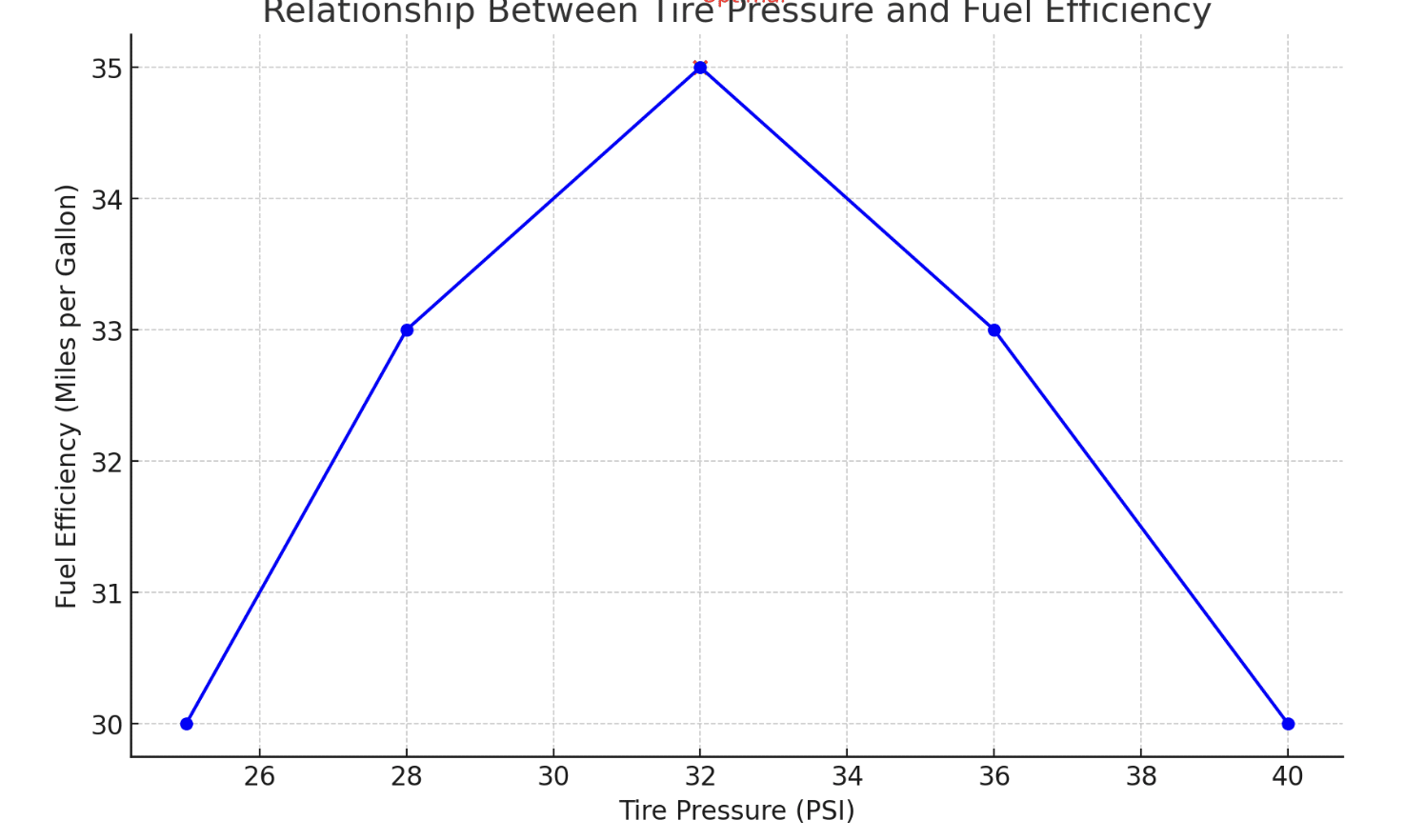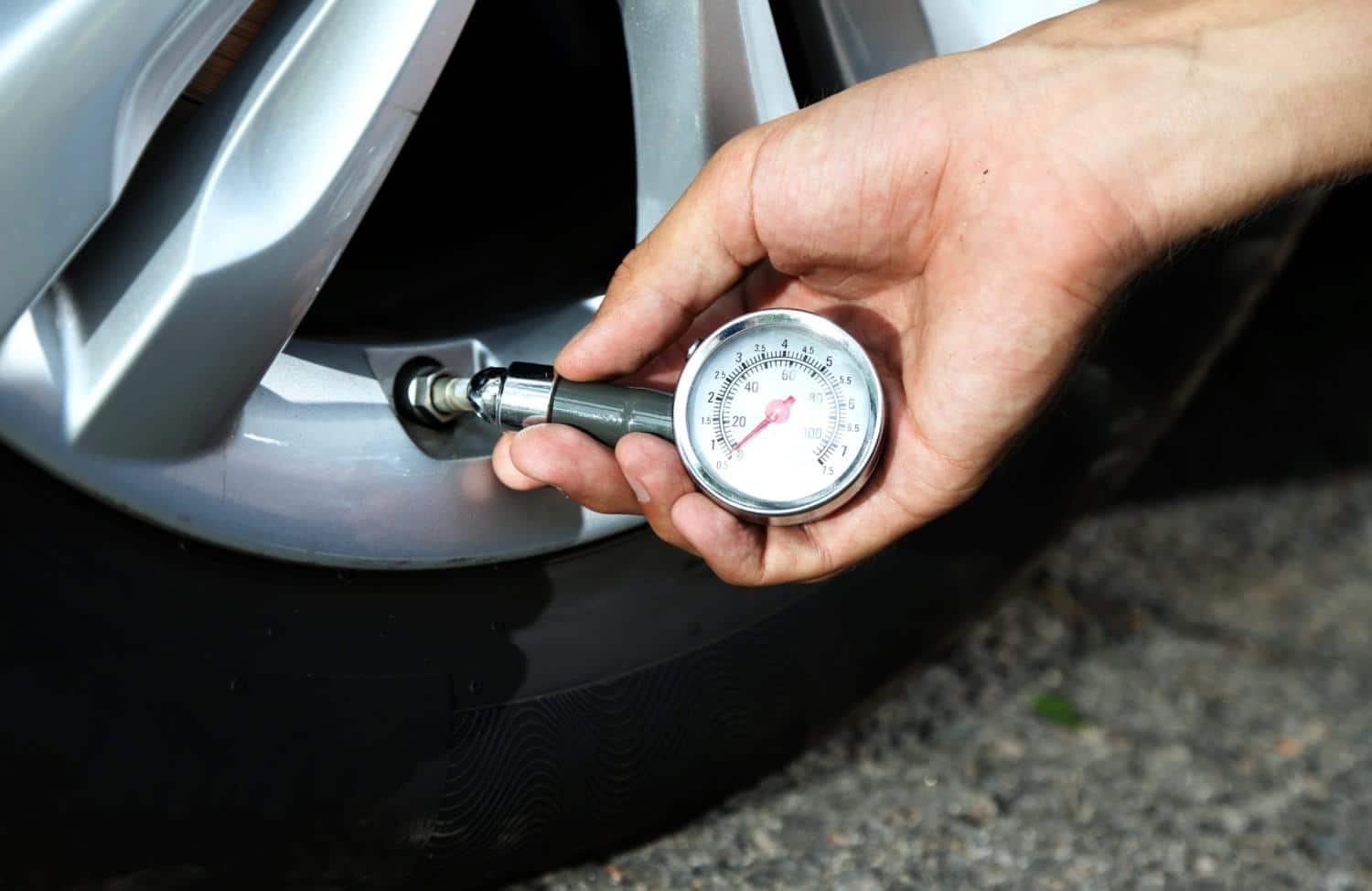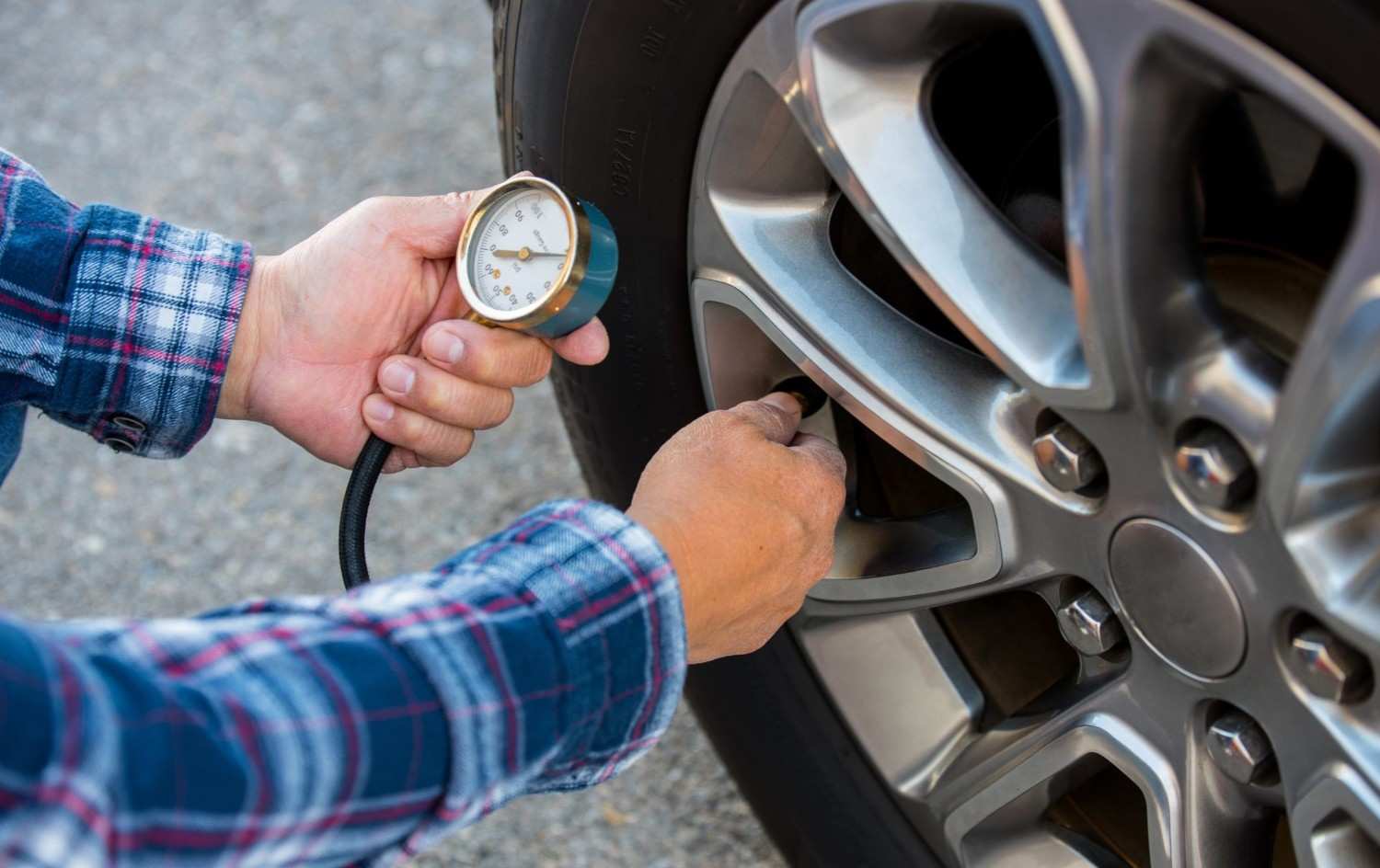Maintaining proper tire pressure is crucial for ensuring vehicle safety and optimal performance.
However, many drivers often overlook this simple yet critical aspect of vehicle maintenance, leading to potential risks on the road.
By regularly checking and adjusting your tire pressure, you can significantly enhance your driving experience, improve fuel efficiency, and most importantly, minimize the chances of tire-related accidents.
In this blog post, we’ll explore the significance of proper tire pressure and provide you with practical tips on how to keep your tires in top condition.
From understanding the consequences of under- and over-inflated tires to learning how to check and adjust tire pressure correctly.
We’ll cover all the essential aspects you need to know to ensure a safer and more comfortable ride.
Let’s get started.
Importance of Proper Tire Pressure in Your Vehicle
Proper tire pressure plays a vital role in ensuring vehicle safety and efficiency.
Let’s take a closer look at how tire inflation impacts these crucial aspects of driving.
1. The Link Between Tire Pressure and Vehicle Safety
Maintaining the correct tire pressure is essential for ensuring optimal contact between your tires and the road surface.
When tires are properly inflated, they provide the necessary traction, stability, and responsiveness for safe handling and braking.
However, when tires are underinflated or overinflated, they can compromise your vehicle’s safety in several ways:
- Underinflated tires: Soft, underinflated tires tend to flex more, generating excessive heat buildup. This can lead to premature wear, tread separation, and even tire blowouts, increasing the risk of accidents.
- Overinflated tires: Hard, overinflated tires have a smaller contact patch with the road, reducing traction and making it harder to control your vehicle, especially in wet or slippery conditions.
2. Tire Pressure and Fuel Efficiency: A Surprising Connection

Did you know that proper tire inflation can also help you save money at the gas pump?
When tires are underinflated, they create more rolling resistance, meaning your engine has to work harder to maintain the same speed.
This increased resistance leads to reduced fuel efficiency and higher emissions.
By keeping your tires inflated to the manufacturer’s recommended pressure, you can minimize rolling resistance and improve your vehicle’s gas mileage, ultimately saving you money and reducing your carbon footprint.
The Risks of Incorrect Tire Pressure
| Aspect | Underinflation | Overinflation |
|---|---|---|
| Handling | Less responsive and precise steering, increased braking distances | Reduced traction and grip, especially in wet conditions |
| Risk of Blowouts | Higher, due to excessive heat buildup and sidewall flexing | Increased, as tires are more prone to damage from potholes and debris |
| Wear Patterns | More wear on the edges of the tire due to uneven distribution of weight | More wear in the center of the tire, leading to uneven tread wear |
1. The Perils of Underinflated Tires
Driving with underinflated tires can expose you to a range of potential hazards.
When a tire is underinflated, more of its surface area comes into contact with the road, leading to increased friction and heat buildup.
This excessive heat not only causes the tire to wear out more quickly but also affects your vehicle’s handling and braking performance.
Underinflated tires can:
- Make steering less responsive and precise
- Increase braking distances, especially in emergency situations
- Cause the tire sidewalls to flex excessively, leading to structural damage and potential blowouts
2. The Risks of Overinflated Tires
While it might seem like overinflating your tires is a safer alternative, it can be just as dangerous as underinflation.
Overinflated tires become stiffer and less compliant, reducing their ability to absorb shocks and maintain a proper contact patch with the road.
The risks associated with overinflated tires include:
- Reduced traction and grip, especially in wet or slippery conditions
- A harsher, less comfortable ride as the tires cannot absorb road imperfections effectively
- Increased vulnerability to punctures, cuts, and impact damage from potholes or debris
- Uneven tread wear, with the center of the tire wearing out more quickly than the edges
- Higher chances of sudden tire failure or blowouts due to excessive air pressure
To minimize these risks and ensure optimal vehicle safety and efficiency, it’s crucial to maintain the manufacturer-recommended tire pressure consistently.
Benefits of Proper Tire Pressure

1. Enhancing Vehicle Safety through Proper Tire Inflation
Maintaining the correct tire pressure is essential for optimizing your vehicle’s safety on the road.
Here’s how properly inflated tires contribute to a safer driving experience:
Improved Handling and Stability
When your tires are inflated to the recommended pressure, they maintain the ideal footprint on the road surface.
This ensures optimal grip and stability, especially in challenging weather conditions or during sudden maneuvers.
With properly inflated tires, you can confidently navigate through rain, snow, or even sharp turns, knowing that your vehicle will respond predictably and maintain its composure.
Optimal Braking Performance
In emergency situations, every second counts.
Properly inflated tires enable your vehicle to stop in shorter distances, as they maintain their intended shape and maximize contact with the road.
This improved braking efficiency can make all the difference in avoiding collisions and keeping you and your passengers safe.
2. Boosting Fuel Efficiency and Environmental Responsibility
In addition to enhanced safety, maintaining proper tire pressure offers significant benefits for fuel efficiency and environmental sustainability.
Better Mileage
Underinflated tires create more rolling resistance, forcing your engine to work harder and consume more fuel to maintain the same speed.
By keeping your tires at the correct pressure, you minimize this resistance, allowing your vehicle to move more efficiently and achieve better mileage.
This not only saves you money at the gas pump but also reduces your overall carbon footprint.
Reduced Environmental Impact
When your vehicle consumes less fuel due to properly inflated tires, it produces fewer harmful emissions.
By maintaining the recommended tire pressure, you actively contribute to cleaner air and a healthier environment, making a positive impact on the planet with every mile you drive.
3. Maximizing Tire Lifespan and Cost Savings
Proper tire inflation not only enhances safety and efficiency but also helps extend the lifespan of your tires, saving you money in the long run.
Even Wear
When tires are inflated to the correct pressure, the weight of your vehicle is evenly distributed across the tire’s surface.
This promotes even wear patterns, preventing certain areas of the tire from wearing out more quickly than others.
By maintaining proper inflation, you can ensure that your tires wear down uniformly, maximizing their overall lifespan.
Prevention of Premature Replacement
Underinflated or overinflated tires are more susceptible to damage, punctures, and blowouts.
By keeping your tires at the recommended pressure, you minimize the stress and strain they endure, reducing the likelihood of premature failure.
This saves you from the inconvenience and expense of frequently replacing your tires, allowing you to get the most value out of your investment.
Maintaining Proper Tire Pressure

Maintaining the correct tire pressure is a simple yet essential aspect of vehicle maintenance.
Here’s how you can effectively monitor and adjust your tire pressure for optimal safety and performance.
1. Understanding and Adhering to Recommended Tire Pressures
To ensure your tires are inflated to the correct pressure, refer to your vehicle manufacturer’s guidelines.
These recommendations are based on factors such as your vehicle’s weight, size, and the intended tire size, and are designed to provide the best balance of safety, performance, and fuel efficiency.
You can typically find the recommended tire pressures on a placard located on the driver’s side door jamb, inside the glove box, or in your vehicle’s owner’s manual.
It’s important to note that these pressures are specified for cold tires, meaning the tires have not been driven on for at least three hours or have been driven for less than a mile at moderate speeds.
2. Practical Tips for Maintaining Proper Tire Pressure
To keep your tires in optimal condition, consider the following practical tips:
- Establish a Regular Checking Routine: Set a reminder to check your tire pressure at least once a month, and always check before embarking on long trips or when carrying heavy loads.
- Adjust for Seasonal Changes: As temperatures drop, make sure to check and adjust your tire pressure more frequently to account for the natural pressure loss that occurs in colder weather.
- Correcting Underinflation: If your tires are underinflated, add air using an air compressor or a tire inflator at a gas station until you reach the recommended pressure. Be sure to recheck the pressure with your gauge to ensure accuracy.
- Addressing Overinflation: If your tires are overinflated, release air by pressing the center pin on the tire valve with a tire gauge or a small tool until you reach the desired pressure. Recheck the pressure to confirm you’ve released the correct amount of air.
By following these guidelines and making tire pressure checks a regular part of your vehicle maintenance routine, you can enjoy enhanced safety, improved fuel efficiency, and longer-lasting tires.
The Role of Technology in Monitoring Tire Pressure

Modern vehicles are often equipped with advanced systems that help drivers monitor their tire pressure more effectively.
However, it’s important to understand the capabilities and limitations of these technologies.
1. Tire Pressure Monitoring Systems (TPMS): A Closer Look
Tire Pressure Monitoring Systems (TPMS) are designed to alert drivers when one or more of their tires are significantly underinflated.
There are two main types of TPMS:
- Direct TPMS: This system uses sensors mounted inside each tire to measure air pressure directly. When the pressure drops below a predetermined threshold, the driver is alerted via a warning light on the dashboard.
- Indirect TPMS: This system uses the vehicle’s Anti-lock Braking System (ABS) sensors to monitor the rotational speed of each tire. When a tire is underinflated, it will rotate at a different speed compared to properly inflated tires, triggering a warning light.
While TPMS can be a valuable tool in maintaining proper tire pressure, it’s crucial to recognize their limitations.
Most TPMS are not designed to alert drivers until the tire pressure drops 25% below the recommended level.
By the time the warning light illuminates, the tire may already be significantly underinflated, compromising safety and fuel efficiency.
Therefore, it’s essential to use TPMS as a complementary tool, rather than relying on it as a substitute for regular manual tire pressure checks.
2. The Vital Role of Service Providers in Promoting Tire Safety
Gas stations, car washes, and other automotive service providers can play a significant role in helping drivers maintain proper tire pressure, thereby contributing to overall road safety.
By offering easily accessible tire pressure check and inflation stations, service providers can encourage drivers to regularly monitor and adjust their tire pressure.
These facilities should be well-maintained, user-friendly, and equipped with accurate tire pressure gauges and air compressors.
Providing clear instructions on how to check and adjust tire pressure can also help drivers who may be unsure about the process.
Visual aids, such as posters or infographics, can be an effective way to guide drivers through the steps involved.
3. The Benefits of Offering Digital Tire Inflation Services
Service providers can take their commitment to tire safety a step further by investing in digital tire inflation systems.
These advanced systems can automatically check and adjust tire pressure to the vehicle manufacturer’s recommended levels, ensuring optimal inflation every time.
By offering digital tire inflation services, providers can:
- Enhance Customer Service: Providing a valuable and convenient service that helps drivers maintain their vehicle’s safety and performance can lead to increased customer satisfaction and loyalty.
- Contribute to Road Safety: By making it easier for drivers to keep their tires properly inflated, service providers can play a proactive role in reducing tire-related accidents and promoting safer roads for everyone.
- Generate Additional Revenue: Offering tire inflation services can create a new revenue stream for service providers, as many drivers are willing to pay for the convenience and peace of mind these services provide.
By working together, drivers, vehicle manufacturers, and service providers can create a culture of tire safety awareness and proactive maintenance.
This will ultimately lead to safer, more efficient, and more environmentally friendly driving experiences for all.
Conclusion
Maintaining proper tire pressure is a critical aspect of responsible vehicle ownership that contributes to enhanced safety, improved fuel efficiency, and extended tire lifespan.
By regularly checking your tire pressure, adhering to manufacturer recommendations, and utilizing the resources available through modern technology and service providers, you can ensure that your tires are always in optimal condition.
Remember, the collective efforts of drivers, vehicle manufacturers, and service providers play a vital role in promoting tire safety and performance.
By prioritizing tire maintenance and making it a part of your regular vehicle care routine, you not only protect yourself and your passengers but also contribute to a safer and more sustainable driving environment for everyone on the road.
So, the next time you’re at the gas station or washing your car, take a few moments to check your tire pressure.
Your tires, wallet, and the environment will thank you!

